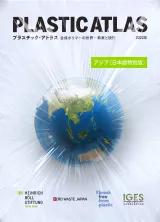Plastic Atlas Japan Special Edition プラスチック・アトラス アジア[日本語特別版]
Additional pages for Japan’s Plastic Waste Management in English can be found here.
Plastic is ubiquitous: we use it for life-saving medical devices, clothing, toys and cosmetics; we use it in agriculture and industry. But we also know the growing risk of plastic waste in the environment, landfills and the oceans.
For example, the amount of plastic that some fulmars accumulate in their stomachs during their lives is equivalent to 31 grams in humans - that would be a full plate. But although awareness of the negative consequences of plastic is growing, we are experiencing an unbroken boom in plastic production. 99 percent of the plastic is produced from fossil fuels; the climate-damaging emissions involved are enormous. And only nine percent of all plastic thrown away since 1950 has been recycled; instead, huge amounts of our plastic waste end up in dumps in Asian countries every day.
We have only just begun to understand the huge dimensions of this crisis. A change of course requires in-depth knowledge of the causes, interests, responsibilities and effects of the plastics crisis. The Plastics Atlas Asia Edition wants to offer exactly that in 20 chapters.
This Japanese translation is based on the 2021 English version of the Plastic Atlas Asia Edition. Please click here to read the Japan specific chapters in English.
